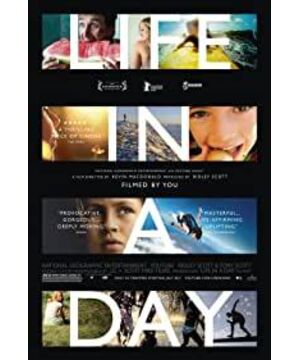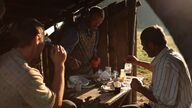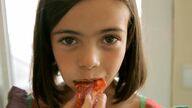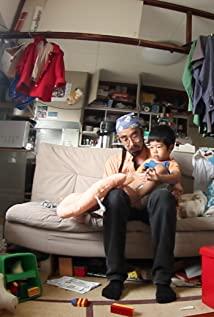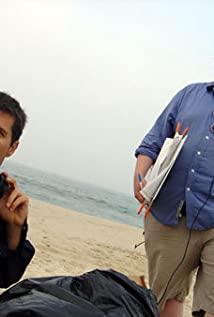The documentary "A Day in the Life" is directed by two American Oscar-winning directors - Ridley Scott (Ridley Scott) and Kevin MacDonald, and the world's largest video sharing website YouTube directed, using 192 countries around the world On July 24th, 2010, more than 80,000 videos were recorded with the theme of "Love and Fear". After screening and editing 4,500 hours of video material, "A Day in the Life" was finally presented to us in 95 minutes. This article first gives an overview of the definition and types of montage, and then focuses on the application of montage.
First, the definition and type of montage
1. Definition of montage
Montage originated from the French montage, which was originally a term in architecture, meaning assembly and installation. It first appeared in film theory and was borrowed by French film theorist Louis De Luc, which means editing and composition in the process of creating film works, and has now become a term in world film and television. After that, many people have made their own definitions of montage. Kurishov said in the book "The Fundamentals of Film Directors": "The various shots of the action are connected in a certain order into a complete artwork, which is montage." Pudovkin said in "On Montage": "The technique of connecting the separate shots so that the audience finally feels a complete, uninterrupted, continuous movement - this technique is montage." This is said in "Aesthetics of Film": "Montage is to connect the shots in a certain order, not only the connection of each complete scene, but also the most detailed details, so that the whole scene seems to be composed of a large number of scenes. All kinds of pictures are arranged in chronological order." Today's scholars have come up with the definition of montage based on the theories of predecessors: from a narrow perspective, montage refers to the arrangement and combination of elements such as pictures, sounds, and colors. That is, the combination of shots and shots in the film is the combination structure between sound and picture; from a broad perspective, montage not only refers to the combination structure of sound and painting, but also includes the arrangement of shots, scenes, paragraphs, etc. The overall artistic aspect of the combination refers to the entire artistic thinking process of a film from the beginning to the completion, to reflect the reality, that is, the image thinking of the film, also known as the montage thinking.
2. Types of montages
As a narrative language of images, montage is a method of unfolding film narratives by using the "joint" and switching between shots and segments. "Dictionary of Cinematic Arts" believes that montage can be divided into three basic types according to its functions: narrative montage, performance montage, and rational montage. Among them, narrative montage is divided into parallel montage, cross montage, repetition montage, and continuous montage. Performance montage is divided into lyrical montage, psychological montage, metaphor montage, and contrast montage. Rational montage is divided into juggling montage, reflection montage, and thought montage. But so far the classification of montage is still divided.
2. The use of montage in "A Day in the Life"
1. The application of parallel montage in "A Day in the Life"
Parallel montage refers to the parallel performance of two or more plot lines, narrated separately, and finally unified in a complete plot structure, or two or more events interspersed with each other to reveal a unified theme or a plot.
The material of this documentary comes from a certain clip that happened to people in 192 countries on July 24, 2010, so parallel montage is the most commonly used type of montage in this documentary. The use of parallel montages allows the pieces of life of each person from different places to be grouped together, transcending the constraints of time and space, forming a common day for people, making people feel empathy and identity. Everyone has to open their eyes and get up in the morning, go to the toilet, wash their face, wash their hair and bathe, brush their teeth and rinse their mouth, then cook and eat, drink water, milk and coffee, and then go out to work until they rest.
2. The use of contrast montage in "A Day in the Life"
Contrast montage is similar to the comparative description in literature, that is, through the lens or between scenes, the content (such as the poor and the rich, the pain and the joy, the life and death, the noble and the humble, the victory and the defeat, etc.) or the form (such as the size of the scene, the color The strong contrast of cold and warm, sound intensity, movement, etc.) produces conflicting effects to express a certain meaning of the creator or strengthen the content and ideas expressed.
The contrast montage in "A Day in the Life" is used together with the parallel montage. Three questions are asked in the film: What's in your pocket or handbag? what do you love? What are you afraid of? Everyone has different answers because of various subjective and objective reasons for their identity, status, culture, and ideas, and it is this difference and heterogeneity that makes our world a kaleidoscope of diversity. There are also several impressive contrast montages such as: the sweet plot of an old couple getting married again and the contrast between the military wife's tears after a video chat with her husband, the boy's failed confession, and the elation of a girl when she was proposed. Contrast, some people basking in their luxuries versus others living a life of embarrassment. These contrasts reflect the differences between people and show a colorful world.
3. The application of accumulation montage in "A Day in the Life"
Accumulation montage refers to connecting a series of shots of the same or similar nature together to create emphasis through visual accumulation.
Some accumulation montages are used in "A Day in the Life". At the beginning of the film, various child images are grouped together with fresh background music, which not only makes the film very artistic, but also makes people feel the joy of life. good. In the second half of the Duisburg Love Parade, the scene after people were squeezed to death was a combination of a lot of quarrel pictures and different people crying, accompanied by a strong background sound, emphasizing people's concern for Fear of death. The subsequent pictures of fireworks blooming and fragments of kongming lanterns are assembled to emphasize people's expectations and yearning for a better life.
4. The use of juggling montage in "A Day in the Life"
Eisenstein explained in his article "Juggling Montage" that a juggling is "any such element which infects the spectator emotionally or psychologically...with the aim of imparting a certain emotional shock to the perceiver, which in turn In its ideological aspect which, as a whole and uniquely, determines the acceptance of the performance by the audience, i.e. the possibility of the final ideological conclusion", "not statically 'reflecting' a specific, thematically desired event, not only by interacting with to deal with the event, but to propose a new technique—to combine randomly selected, independent (and function outside of the established structure and episodic scene) contagion (juggling) Freely combined, but with a clear purpose, that is, to achieve a certain final theme effect, this is juggling montage."
The last shot of the film is a snail wriggling on a spherical object, then a note appears with the words mind your own business, and the snail slowly eats the note , and then the camera zooms further and further, and the sphere gradually emerges, becoming a globe. This snail has nothing to do with the previous plot, but it expresses some of the director's ideas. In my opinion, the snail slowly eating the note that says "mind your own business" on the earth reflects that in the director's point of view it is not right to only care about one's own business, everyone on the earth is connected Yes, man is not an isolated existence. You may think that the people in these films have nothing to do with you, but in fact these people are all of us. We have to love life and everything around us.
5. The use of other montages in "A Day in the Life"
There are some montage techniques that I can't find the term to describe, so I'll put them in this point.
The documentary is a decentralized film without a protagonist, but some characters appear two or three times. For example, the man who likes to travel around on a bicycle, who doesn't know whether he is Korean or North Korean, first appeared to talk about his travel experience, and the second time he appeared to talk about his hope that South Korea and North Korea would one day be reunified. The third time is when he gets a haircut and says he's going on his journey after the haircut; like the little boy who shines his shoes, the first time he shows up is after the question is raised what's in your pocket or in your handbag In the camera group of the person who answered, he took out the money and the camera followed him to let us know that he was a little boy who shined shoes, and he appeared for the second time and told that his father was very good to him, and he took out the money that his father bought. His computer, proudly said that the Wikipedia in the computer is like a library; for example, the little boy Bobby's family, the first time it appeared, told that Bobby's mother was ill. For example, to make a family plan, Bobby should be happy in front of the camera. The second time he appeared, his father said he had nothing to fear. At first, my father was afraid that my mother would get cancer, but my mother still got it. Later, my father was worried that my mother's cancer would come back, and my mother's cancer was indeed It relapsed, but my mother survived, and my father thought everything would be fine. These people appearing repeatedly at different times seem unrelated, but they all serve the theme of a certain part or the whole film.
By changing the node where the picture appears in the movie, a very good effect is achieved.
The overall tone of this documentary is very warm, which also benefits from the use of film montage. Even if people are afraid of being alone, afraid of death, and afraid of war at first, we can find that even these frightening things become hopeful after the picture is assembled. The director put the question of what are you afraid of at the end, and the tone began to become sad, but the last scene of fireworks and lanterns still dilutes these sadness. Although you may experience misfortune, you can set off fireworks for happy things. You can put kongming lanterns to pray. Although Bobby's mother experienced cancer and relapsed, she survived; although the grandfather had just completed a major heart operation, he was still very grateful to the doctors and nurses in the hospital and believed that he would recover soon; although a man Life is very difficult, because he has to take care of his children and can't make money, but he still believes that God will not abandon them and still loves life. The warmth of the tone is also related to the fact that most of the material selected by the director is warm.
In addition, the transition of "A Day in the Floating Life" is also very distinctive. The transition is usually accompanied by some pictures accompanied by fresh background music, or a child, or a woman on a train, or a group of sheep looking at the camera, or a woman skydiving, or a dancer. A couple, very artistic and ornamental.
To sum up, the use of different types of montages can achieve great results and can make documentaries more attractive and watchable.
View more about Life in a Day reviews


